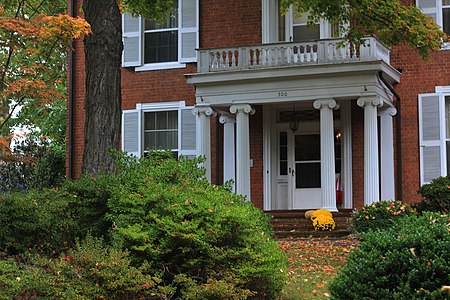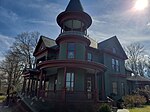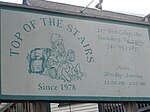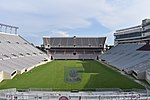Amiss–Palmer House
Buildings and structures in Blacksburg, VirginiaGreek Revival houses in VirginiaHouses completed in 1855Houses in Montgomery County, VirginiaHouses on the National Register of Historic Places in Virginia ... and 2 more
Montgomery County, Virginia Registered Historic Place stubsNational Register of Historic Places in Montgomery County, Virginia

Amiss–Palmer House, also known as the Palmer House, is a historic home located at Blacksburg, Montgomery County, Virginia. It was built the 1850s, and is a two-storey three-bay brick house with a hipped roof and pattern-book Greek Revival style elements. These elements include the front portico and frieze. It has a traditional double-pile center-passage form. Also on the property are the contributing kitchen, a two-storey three-bay log house and a smokehouse.It was listed on the National Register of Historic Places in 1989.
Excerpt from the Wikipedia article Amiss–Palmer House (License: CC BY-SA 3.0, Authors, Images).Amiss–Palmer House
Mountain View Drive, Blacksburg
Geographical coordinates (GPS) Address Nearby Places Show on map
Geographical coordinates (GPS)
| Latitude | Longitude |
|---|---|
| N 37.226666666667 ° | E -80.4075 ° |
Address
Mountain View Drive 300
24063 Blacksburg
Virginia, United States
Open on Google Maps








